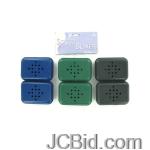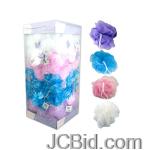
| Updated Blogs |
|
More .....
|
 RSS Feed | Login
RSS Feed | Login Health & Life Style
Health
Best Chicken Pox Treatment.
By anneyshine at 2009-12-29 01:24:12
Chicken pox is a disease that affects mainly children. It is contagious and can be spread even through air. The main way of chicken pox transmission is by direct contact with the person infected by chicken pox. Like many other disease, chicken pox also has symptoms. These signs will appear about three weeks after infection with the virus that causes chicken pox. The reason for this is because the chicken pox virus has an incubation period. The proper medical term fro chicken pox is actually varicella, because the name of the virus that causes this children' s disease is called varicella zoster.Chicken pox is very common in children, being actually a children' s disease. It is very contagious and it is actually nothing but a viral infection. Chicken pox is cause by a virus called varicella zoster, thus the medical term for chicken pox: varicella. There are few complications in chicken pox cases, but when they occur, they are very serious. It does not matter if you are otherwise healthy.
Adolescents and adults who develop chickenpox are also at high risk of developing serious complications. After a person has chickenpox, the virus typically lives silently in the nervous system of the body for the rest of a person's life. It may reactivate (come to life again) at any time when the body's immune defenses are weakened by stress or illness (such as cancer or HIV infection) or by medications that weaken the immune system. Reactivation of the virus causes a condition called shingles, a painful blistering skin rash that typically occurs on the face, chest or back, in the same area where one or two of the body's sensory nerves travel.Some parts of your child' s body are more likely to be affected by chicken pox than others. The chest and upper part of your child' s back are the ares where the rash will first appear. However, chicken pox may affect your whole body, even the mouth. These are more rare cases of chicken pox, but they can exist.
Chicken pox, also known as in medical terms, varicella consists of a rash all over your body. This rash then soon turns into blisters and then scabs. These blisters are very itchy, but they must not be scratched under any circumstance, because it may lead to infection. Another chicken pox symptom that must be controlled is the fever. Although, a chicken pox patient will not suffer from a very high fever, nonetheless it must be reduced. For the itching sensation that chicken pox gives you, warm baths using baking soda are recommended. You may also use green peas or even honey, to relieve your child of that terrible itching sensation that chicken pox gives. Cool compresses or even cool baths will actually do you a world of good when suffering from chicken pox.Because the blisters that are cause by chicken pox are filled with fluid, the risk of developing an infection is very great. So make sure that your child washes his/ her hands at least three times every day. Also try to keep the skin affected by chicken pox as clean as possible. Infections in children suffering from chicken pox are not very sever, but there is always the risk of a big infection.Chicken pox is caused by the virus called varicella. This virus is the one responsible for all the symptoms and complications caused by chicken pox. In order to prevent the infection of the body with this virus, doctors recommend varicella zoster immune globulin (VZIG). This treatment is meant to prevent the acquiring of the virus even though you are in contact with other patients. Because of its price and its short term effect this treatment is prescribed only in special cases where there is the risk of severe disease and when people are not eligible to receive the vaccine.
Visit for more useful information on chicken pox symptoms and chikungunya also dengue fever .
Permalink | Comments (0)
Comments
To add a comment please login by clicking here
JC Store | JasmineCorp
|
JCBid
|Software
Development |
Domain
Registration | Hosting
| Web
Designing | Buy
Books |
Advertise
with JCSearch |
Whois
|
IP
Locator |
Add
Search |
Shopping
| Store
|
Free Blogs |
Free
GuestBook | Free
E-Cards |
Free
Games |
Free
Tutorials |
Set
as Home | Add
to Favorite
| Suggest
a Site |
Directory
Our Portfolio
| Terms of service
| Free quote
| Tell a Friend
| Special Offer
| Job Opportunities
| games
| Usenet Groups




